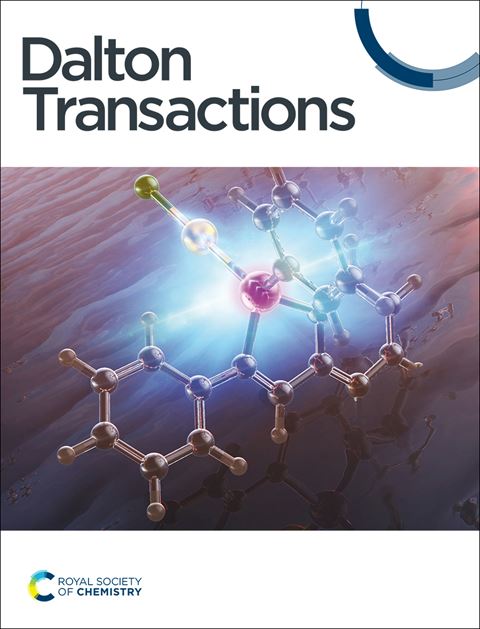The Relative Impact of Ligand Flexibility and Redox Potential on the Activity of Cu Superoxide Dismutase Mimics
IF 3.5
3区 化学
Q2 CHEMISTRY, INORGANIC & NUCLEAR
引用次数: 0
Abstract
Two copper(II) complexes, [Cu(salbn)] and [Cu(py2bn)(OAc)]ClO4, formed with the Schiff-base ligands 1,4-bis(salicylidenamino)butane (H2salbn) and 1,4-bis(pyridin-2-ylmethyleneamino)butane (py2bn), have been prepared and characterized in solid state and in solution, and their ability to catalyse the dismutation of O2•− has been evaluated in homogeneous medium and immobilized in a mesoporous matrix. The crystal structures show that [Cu(salbn)] possesses a distorted square-planar geometry, while [Cu(py2bn)(OAc)]ClO4 adopts a cis-distorted octahedral geometry. The two complexes experience structural changes in solution, and different spectroscopies were used to examine them. Moreover, their redox potentials are strongly affected by the solvent. In water, the complexes exist as [Cu(salbn)(H2O)] and [Cu(py2bn)(H2O)]2+ with Cu(II)/Cu(I) reduction potential at -361 mV and -229 mV, respectively, well different from redox potentials measured in acetonitrile. Although with a more unfavourable redox potential, [Cu(salbn)(H2O)] reacts with O2•− faster than [Cu(py2bn)(H2O)]2+, with catalytic rate constants of 3.3x107 and 2.9x107 M-1s-1, respectively, at pH = 7.8. Both complexes exhibit higher superoxide dismutase activity than the analogues with a shorter central alkyl chain. The observed catalytic rates essentially correlate with the ligand flexibility, rather than with the redox potential, which is also supported by the slower O2•− dismutation rate when the complexes are immobilized by encapsulation into the channels of well-ordered mesoporous SBA-15 silica where the pore modifies the complex structures and restraints the ligand rearrangement.求助全文
约1分钟内获得全文
求助全文
来源期刊

Dalton Transactions
化学-无机化学与核化学
CiteScore
6.60
自引率
7.50%
发文量
1832
审稿时长
1.5 months
期刊介绍:
Dalton Transactions is a journal for all areas of inorganic chemistry, which encompasses the organometallic, bioinorganic and materials chemistry of the elements, with applications including synthesis, catalysis, energy conversion/storage, electrical devices and medicine. Dalton Transactions welcomes high-quality, original submissions in all of these areas and more, where the advancement of knowledge in inorganic chemistry is significant.
 求助内容:
求助内容: 应助结果提醒方式:
应助结果提醒方式:


